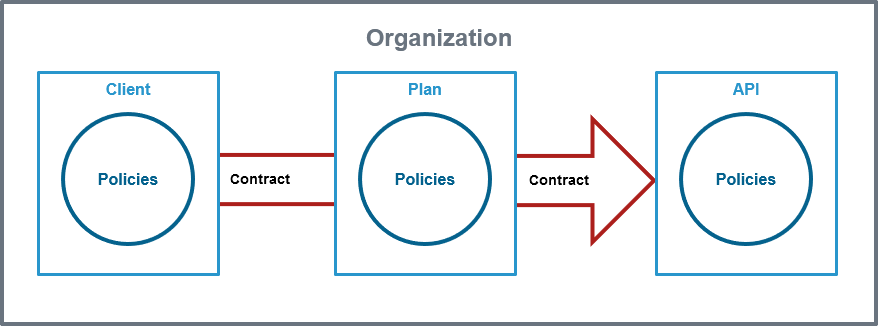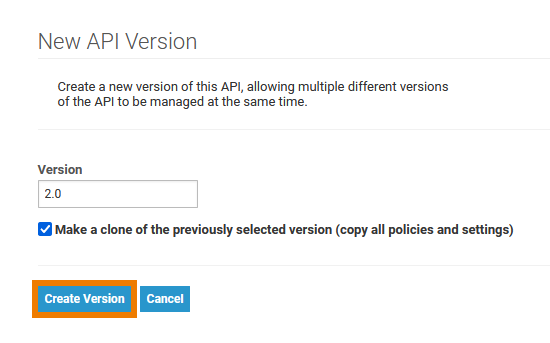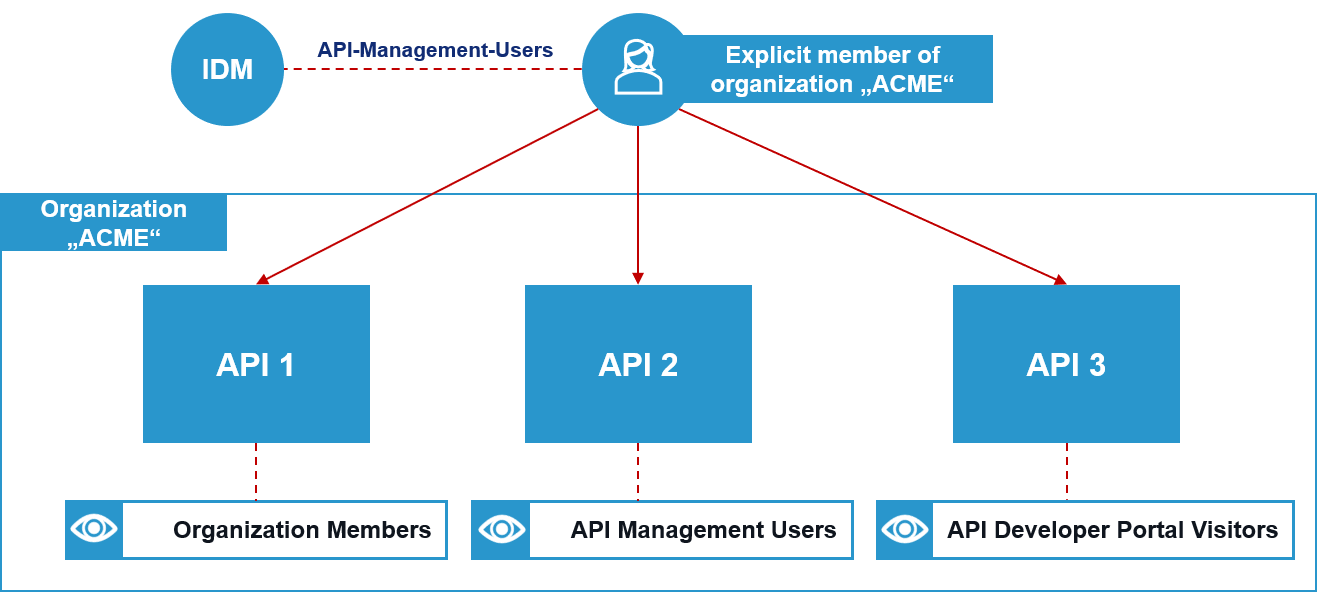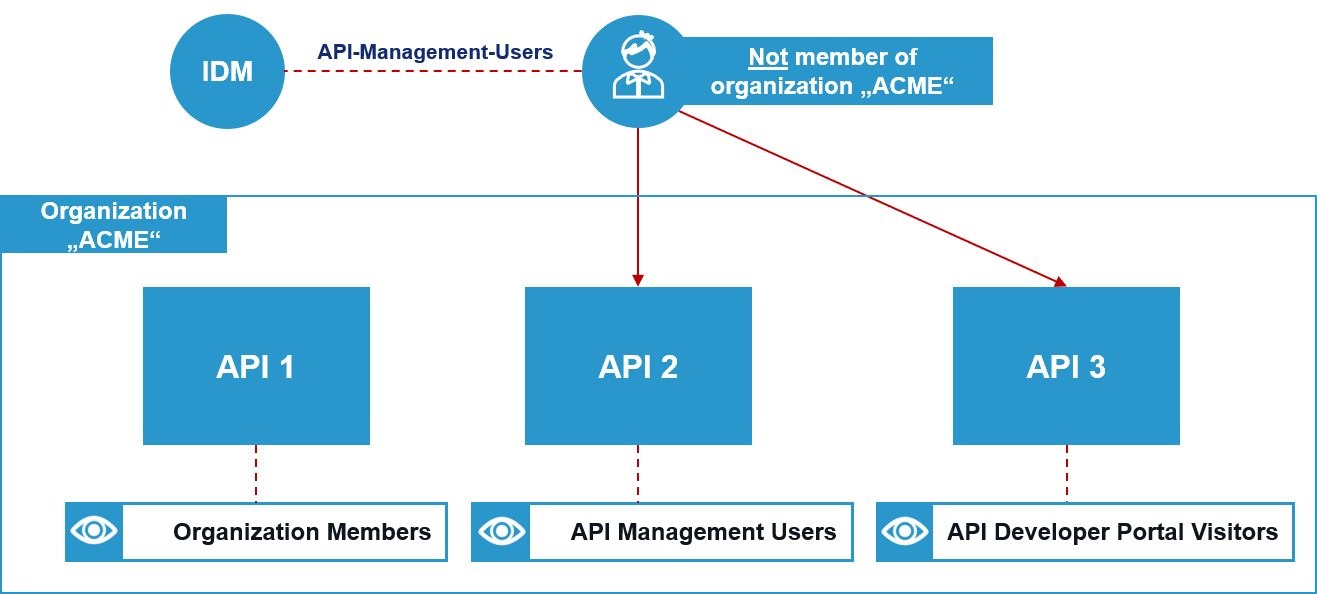The Concepts of API Management
API Management uses a hierarchical data model that consists of five primary elements:

Figure: Overview on the API Management Data Model
The main elements of API Management are Clients, Plans and APIs. All of them can contain Policy definitions. To be used, they need to be grouped by an Organization and related by a Contract.
Element | Description |
|---|---|
Organization | Almost everything in the API Management data model exists in the context of an organization:
|
Client | The client is the consumer of the API:
|
Plan | A plan is a set of policies that defines the level of service API Management provides for an API.
|
API | APIs in API Management represent real back-end APIs (Application Programming Interfaces). An API is also known as a service, meaning anything that can be invoked remotely by some sort of client. API Management provides a way to turn unmanaged (raw) back-end APIs into managed APIs by attaching policies to them. Every managed API can be published as Public API or Private API or both:
In API Management, users can create new APIs manually or easily import them from the API Catalog. |
Policy | Policies are at the lowest level of the data model, but they are the most important concept: A policy is a rule or a set of rules API Management uses to manage access to your APIs.
|
Contract | A contract relates a client to an API, using a plan. |
Versioning
API Management supports versioning for APIs, plans and clients. All three elements share one behavior: They have to be determined to be available for use in the gateway.
While it is still possible to modify a published API and a registered client, a locked plan cannot be revised.
If modifications to the API Management configuration are necessary, you can do this by:
Creating a new element.
Modifying an existing element (only APIs and clients).
Create a new version of an existing element.
Versioning allows you to modify the configuration of an existing element, but retain the previous version. To create a new version of an element, open its details page and click New Version in the basic settings:

Then, configure your new version:

Field | Description |
|---|---|
Version | Enter a version name or number. |
Make a clone | Enable this checkbox if you want copy the policies and settings of the previous version to your new version. Typically cloning is more convenient when making incremental changes. |
Click Create Version to add the new version. It will be saved to the element.
You can enter numbers and text in the Version field which allows the use of version numbers (e.g. 1.0, 2.1 ...) as well as version descriptions (e.g. Gold, Super etc.).
Use drop-down Version in the basic settings of the element to switch between the different versions:

Visibility
The visibility concept of API Management enables a fine-grained access to APIs and defines which user groups can find them. The visibility resides on top of the permission system as another security layer. Visibilities are applicable to Public APIs and plans for Private APIs. The chosen visibility affects both UIs: The content of API Management as well as the content of the API Developer Portal from where API consumers can access the APIs. Relevant for the visibility is the identity management (IDM) group a user belongs to: A user who is part of the API-Management-User group can browse and find the same APIs in API Management and in the Developer Portal once logged in.
You can choose between three different visibilities:
Organization Members (default)
API Management Users
API Developer Portal Visitors
 | Example: Three APIs have been created in organization ACME. Each API is assigned a different visibility:
|
 | Organization Members (default) APIs are secured by default: If you create a new API, the default visibility setting is Organization Members. Only members of the organization the API has been created in are allowed to see it. Example: API Management users who are explicit member of organization ACME can see API 1, API 2 and API 3. |
 | API Management Users Select the visibility API Management Users to allow all API Management users to see your API. Example: All API Management users or administrators can see API 2 and API 3, they do not need to be member of organization ACME. |
 | API Developer Portal Visitors Choose the visibility API Developer Portal Visitors to allow API developer Portal users and visitors to see your API. Example: Developer Portal users and anonymous portal visitors without a PAS login can see API 3 only. |



